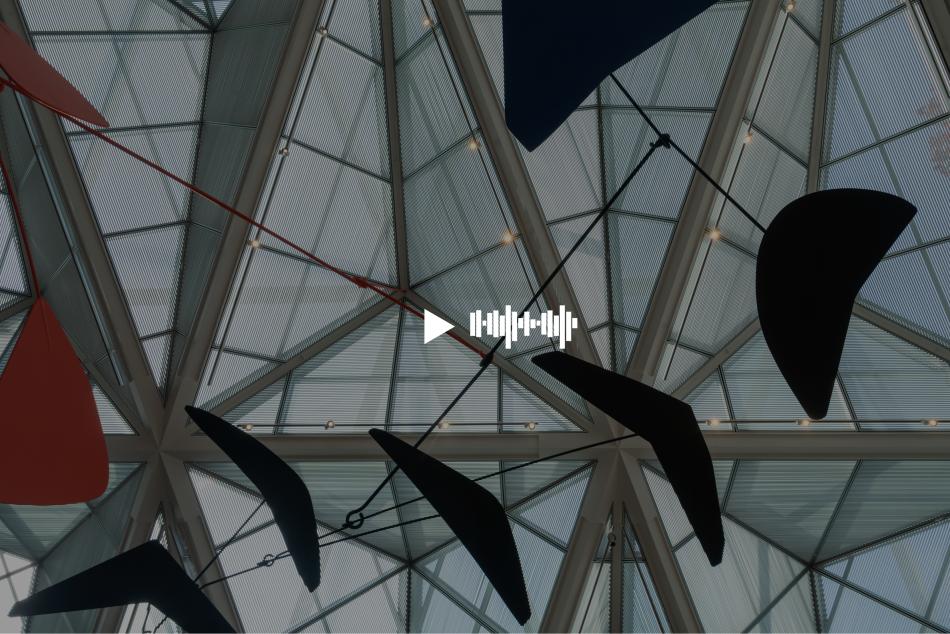NARRATOR:
Helen Frankenthaler visited Cape Breton, Nova Scotia, on the Atlantic coast in 1952. Inspired by its famed costal views, she came home and made this.
Molly Donovan, associate curator of modern art.
MOLLY DONOVAN:
What we’re looking at is certainly an abstraction, but it’s an abstraction that evokes a landscape. The light green edge that descends to the blue band can be really understood as a rocky shoreline that meets the water. And the blue splashes throughout the composition, could be seen as the Atlantic Ocean violently pouring over into the landscape.
NARRATOR:
Frankenthaler—just twenty-three at the time—was heavily influenced by artists like Jackson Pollock and their experiments in abstraction. But she pioneered her own style, pouring turpentine-thinned oil paint from coffee cans onto an unprimed canvas on the floor. The paint completely permeated the canvas, creating luminous pools of color.
About her canvases Frankenthaler once said, “...The thing was to decide where to leave it, and where to fill it, and where to say this doesn’t need another line or another pale of color. In other words, the very ground was part of the medium.”
MOLLY DONOVAN:
Very soon after it was made, two younger artists, Morris Louis and Kenneth Nolan, made a visit to Frankenthaler’s studio. Morris Louis was famously quoted as saying later that this work was a “bridge between Pollock and what is possible,” meaning that Frankenthaler took the example of Pollock painting abstract canvases on the floor, and she imbued this vocabulary with a fresh outlook through her staining technique.



